
Mikhail Emtsev
33 years, Russia
Hiking Clothing and Gear List
If you are just beginning to hike, this article is for you. Here you will be able to learn more about the equipment and clothes required in the mountains or in the forest. Since this feature is more intended for beginners, I will avoid talking about special equipment for complex journeys (e. g. through mountain rivers or technical terrain). Everything listed below can be used in a variety of regions, since list is universal. I will just mention winter hikes, thereafter this topic should be developed in another article.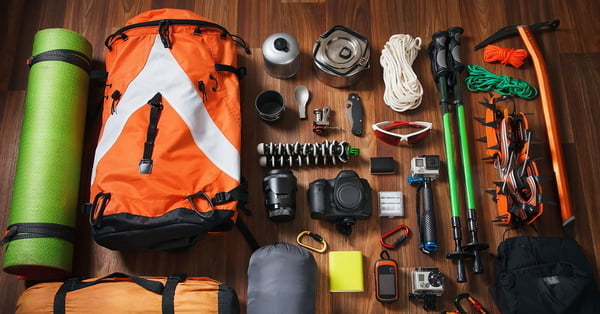
Factors That Affect a Person in the Mountains
A bit of theory: in the city we do not pay attention to the forces of nature that affect us. We can easily escape from the rain under the umbrella and avoid the summer sun by going into an air-conditioned room. In the mountains we won't have such an opportunity. Your clothes and equipment should be protected from the main environmental factors. There are many dangerous attributes in the mountains (there will be another article on this topic also) but I will talk only about those you can face with clothes and gear.
For sure you will have to approach the following factors in the mountains:
- Low temperatures
- Sun radiation
- Rainfall
- Wind
- Bad visibility.
Low temperatures
Diurnal variation can reach 20° C (68 F) or more. This means, during the day you can suffer from the heat, and at night you can fall asleep with snow. More often this can be observed in the high altitude (above 2,500 meters), so if your trip passes below, you cannot catch such sharp temperature changes. The danger of low temperatures is the risk of getting hypothermia. The condition is quite unpleasant and it is difficult to get the person out of it, especially in the mountains. The solution to the problem will be warm clothes, while in the bivouac, the sleeping bag.
Sun radiation
The sun in the mountains is particularly intense. Firstly, there is thin air in the mountains, and secondly, you spend the whole day in the sun. So you should prevent such risks as hyperthermia (heat stroke) and sunstroke. Sunstroke is a very severe illness. It's better to be avoided at all, because it's extremely unpleasant and hard to treat.
Properly selected clothing will solve only half of your problems. You should pay attention to walk and rest mode and drinking discipline: in other words, drink water, rest, dress proper clothes and cover your head. Additionally, sunburns are more common than you may think. In the mountains in less than an hour you can burn to blisters! Naturally, it won't be possible to enjoy the hiking no more. Long sleeve clothes and a hat will help you to avoid it.
Rainfall
Precipitations in the mountains are regular. Normally it rains and sometimes it snows (in off-season or at high altitudes). In case of rain, wet clothes may accelerate hypothermia. I wrote about the consequences above. In this case, waterproof clothes are a solution. On the bivouac, use a tent.
Wind
In the mountains, winds are blowing almost constantly. Wind can also lead to accelerated hypothermia. The consequences are listed above. Windproof (usually water/windproof) clothing will fix this issue. A wind resistant tent is required.
Bad visibility
In the city, often we don't realize how dark it can be at night. Roads are illuminated and homes have electricity: normally, wherever we go, everything is illuminated. But outdoors it's all the opposite. After the sunset, it is completely dark! Also, there is fog in the mountains. In this case, visibility is limited to few (!) meters. By themselves, these phenomena are not dangerous, but people can get into trouble while approaching them. For example, you can get lost. So it's recommended to have a flashlight (for darkness) and a navigator (to orientate in conditions of bad visibility).
Clothing
By knowing what natural factors you will have to face in the mountains, you can prepare the necessary clothes to minimize the impact. The principle of layers, also used by climbers, applies for hiking as well, but with an exception. Hiking and climbing take place on completely different altitudes, and the apparel must be selected accordingly. Here is a checklist of the five layers.
First Layer
It includes underwear (briefs and T-shirts) and thermal underwear. T-shirts and briefs should be made of synthetic materials, as they are more resistant to water and dry faster. I recommend T-shirts because they cover the shoulders from the sun and the straps of the backpack will bother you less.
Thermal underwear is useful if you use membrane clothing (read more below) or as pyjamas.
Thermal underwear can be of different thicknesses: thin, medium and thick. Thin fit for walking, but it won't keep you warm while sleeping. Thick underwear should be used only with cold weather, as it would accelerate overheating with warm weather. But you can use it for additional warming at night. Medium thickness thermal underwear will be the best option for summer and off-season trips. It will be warmer to overnight. However, it is better to remove it during hot weather.

What to carry in backpack:
Briefs
T-shirts
Second layer
The so-called intermediate layer includes fleece clothing or synthetic insulation apparel. You can use it in cold weather or on a bivouac when you are not moving so actively. I recommend synthetic insulation, because it is warmer and lighter than fleece and is more resistant to wind and water. A pair of fleece trousers will always be helpful on the bivi although they will be too hot in summer, but will warm you up in places where you can't make a campfire.
I would add a long-sleeved shirt to this layer. It will protect you from sunburns. It's light enough, and it's not so hot to go under the scorching sun. The sleeves must be long enough to cover your arms entirely. You can always roll up the sleeves whenever you want.
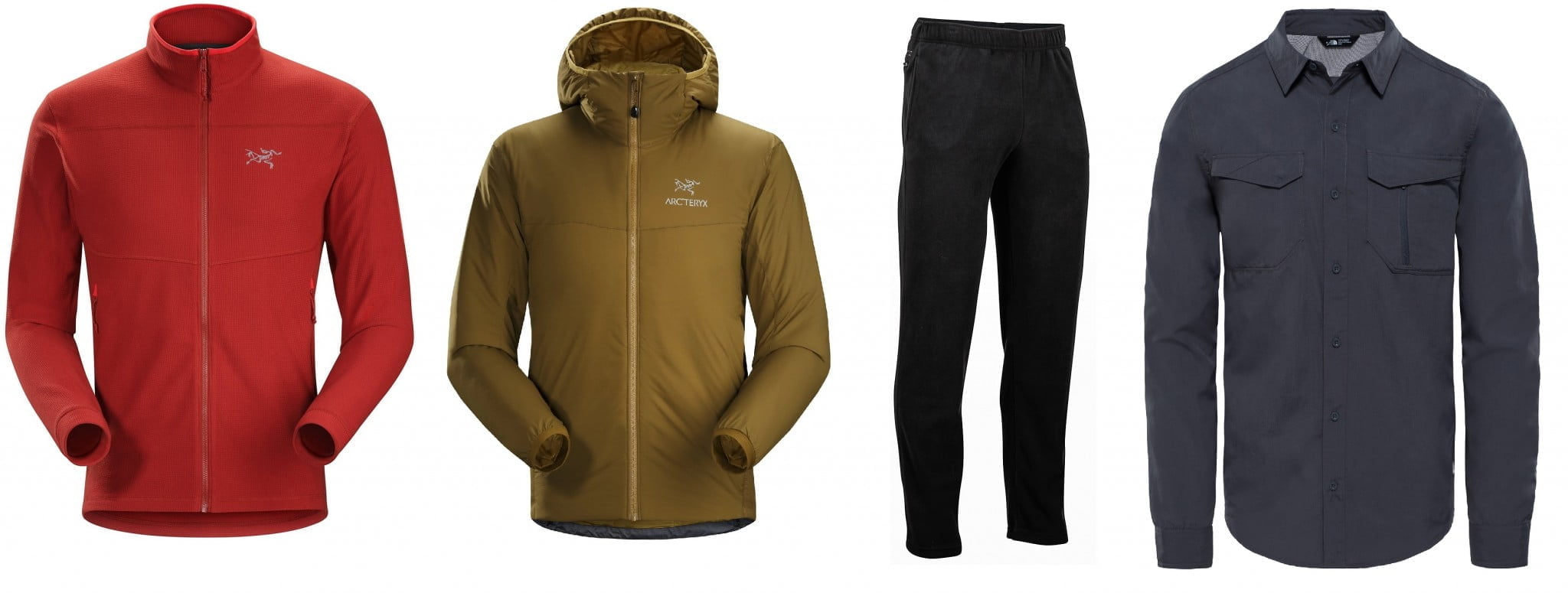
What to carry in backpack:
Fleece jacket/heated jacket
Fleece trousers
Long sleeve shirt
Third Layer
The upper layer is the main one, which will almost always be worn. These are synthetic fabric trousers, preferably a little elastic. They are better than shorts, because they will protect from the sun and thorns; and synthetic dries faster than cotton. Membrane trousers can be used as an alternative to normal walking slacks. But remember to wear it with thermal underwear otherwise the membrane won't work. I also recommend to learn how to tend the membrane apparel before the usage, so it lasts longer.
The first part of this layer should be composed by a windbreaker (wind and water resistant jacket) or a membrane jacket. A windbreaker makes everything easier. You must worn it over the lower clothing layers (t-shirt or shirt), and it protects you from wind and light precipitations (but won't protect you during long rains). A membrane jacket (worn over thermal underwear) is more resistant to water and, therefore, protects from rain more; it's better than any other basic windbreaker.

What to carry in backpack:
Trousers for walking/ membrane trousers
Windbreaker/ membrane jacket
Fourth Layer
These are the warmest clothes we take with us. This layer can be used early in the morning, before sunrise, and in the evening, when the temperature drops. The best example of a warm layer is a down jacket. It is light, warm and doesn't take much space. But keep it away from water, when get soaked, it may lose all its warming effect! Take it to the hikes in the off-season or to the high altitudes, where night temperatures can drop below zero.
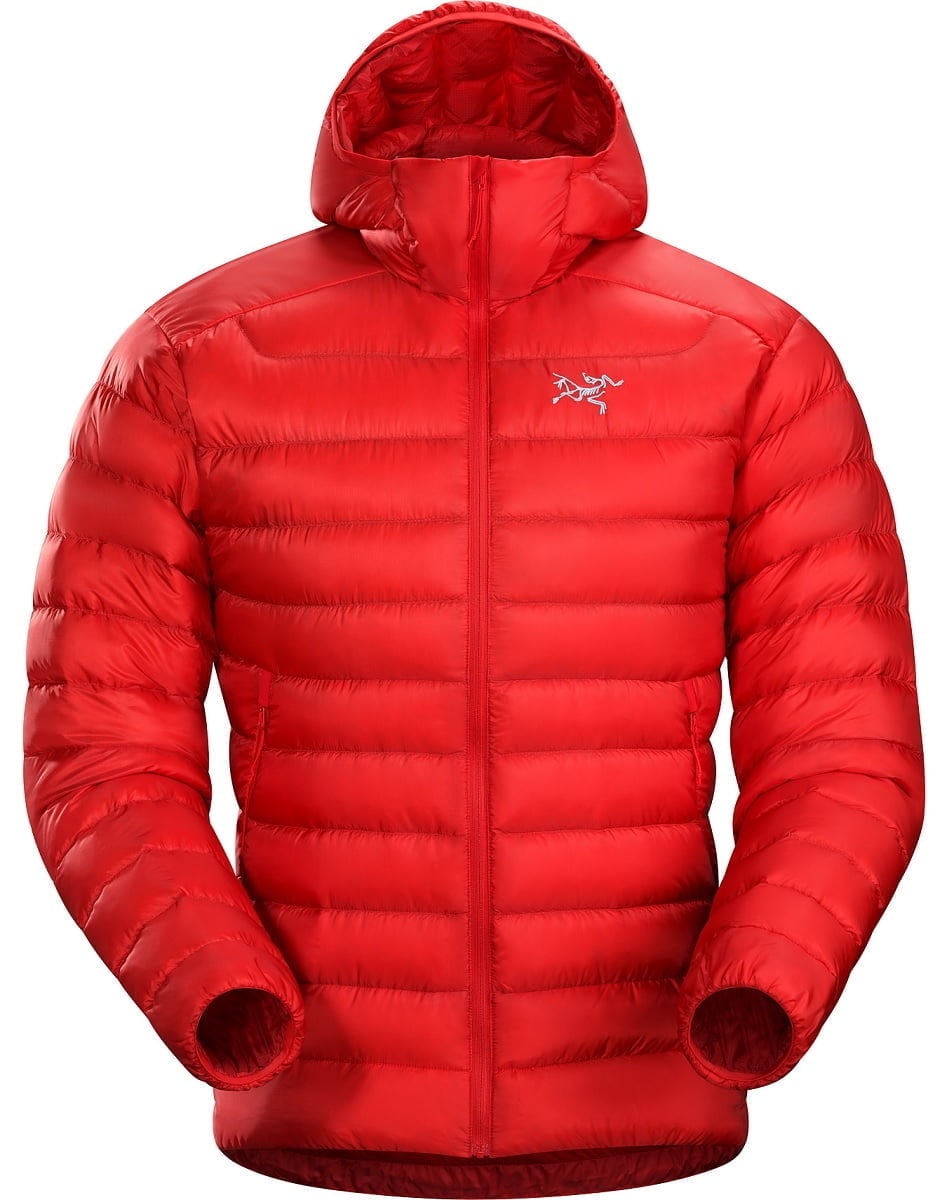
What to carry in your backpack:
Down jacket
Fifth Layer
And what about the accessories? The set includes the beanie you can wear on the bivouac and during sleep (it will be much warmer). A sun hat will protect you during the day better than cap as it covers your neck, ears and face.
In particular cases cover the neck with a buff: it has multiple uses; you can cover your head with it as well. Thermosocks, more precisely socks, absorbing moisture, cannot be missed in this list. A good pair of boots (read more below) will perform their function only in combination with good socks (you can leave woollen socks for sleeping). Lastly, include gloves to your list, they may be made of thin fleece. You will need them when it gets cold or during off-season trips.

What to carry in backpack:
Beanie
Sun hat / cap/ bandana
Buff
Socks
Gloves
Take a note of:
1) Choose bright colours clothing in order to be easier to find in case of getting lost.
2) Take one change of clothes in case of getting wet. It will be especially useful when the weather is expected to be wet.
Footwear
Trekking Boots

Are the main footwear you will use on your hike. It should be comfortable, properly selected (about 1 size larger). Be sure to break it in in advance otherwise you may hurt you toes! Here is tips how to choose your shoes: it should fit tight the ankle; have a good sole for the best adherence with the surface; membrane; rubber toecup against stone cuts.
On basic routes you can wear shoes with more soft soles. For the routes requiring crampons, it is better to choose shoes with a hard sole (the same applies to complex trekking).
Bivaq shoes
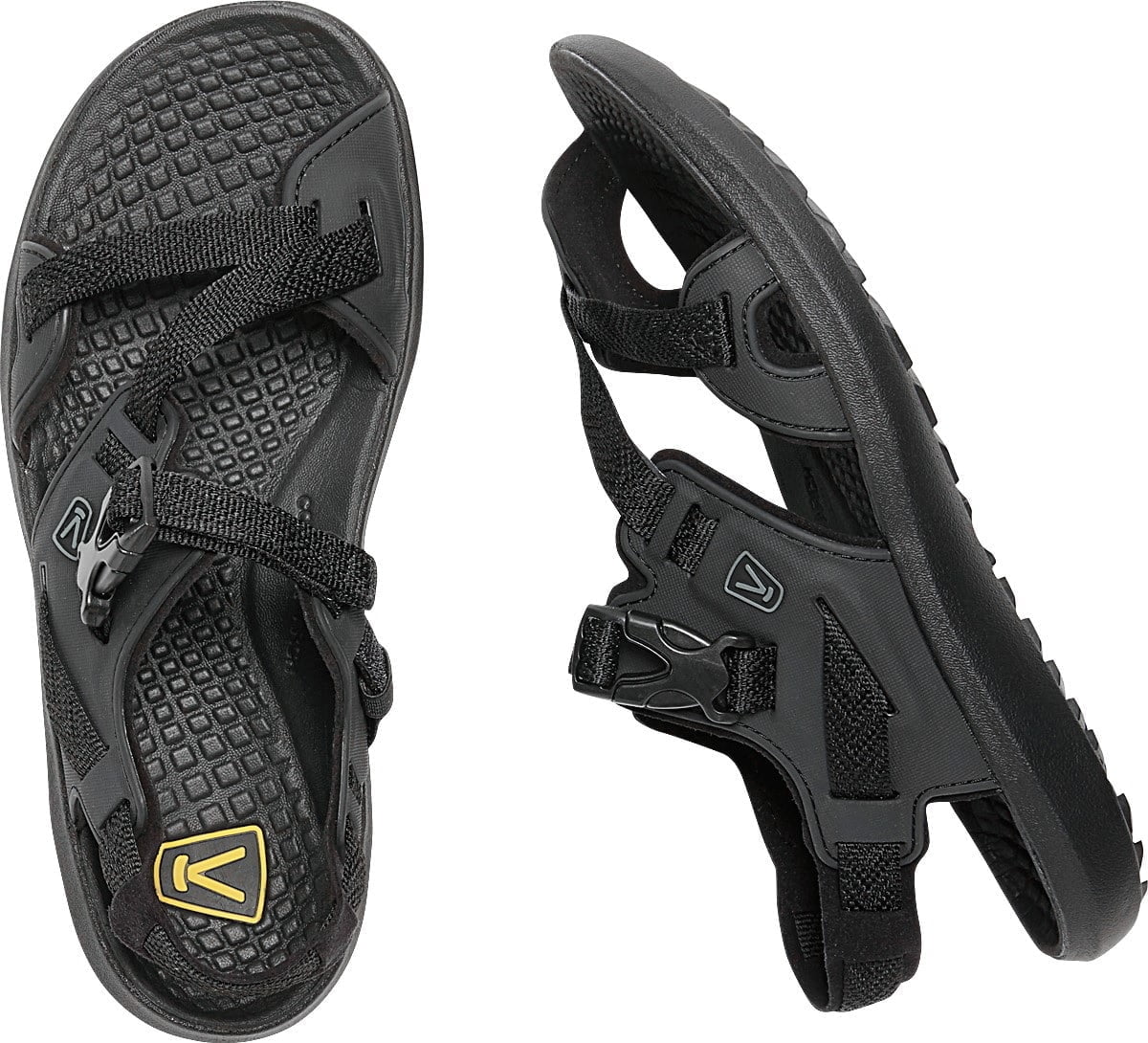
Bring a pair of sandals or rubber slippers for the camp. They better be made of rubber, because under the damp weather once gets wet, the cloth sandals may not dry until the end of the trip.
The Gear
I am referring to all those things that will ensure your most comfortable stay in the outdoors. Conditionally it can be divided into equipment that you use during your hike, and the gear that you use in the bivouac.
Hike Gear
Backpack

The backpack is the most essential equipment element. It stores all the things you need on the route. It should fit the volume of the chosen trip and have adjustable shoulder straps and lumbar support. The complect for shure should be added with a rain cape.
The required volume of a backpack can differ depending on your journey and season of the year (in winter it will be more voluminous). Unfortunately, there is not yet a standard of a universal backpack. For example, for an 8-day hike in the Caucasus in the summer, the optimal volume can be 70 litres for women and 80-90 litres for men.
Trekking Poles

Nowadays, you can see tourists with hiking sticks almost everywhere. Considering the current debate, it is up to you to decide if you want to take them or not. Personally, I always take them. The important thing is the lightness and possibility to adjust the length. Considering your physical strength, you may choose poles with twist lock or clamp lock (twist locks are harder to manage).
Raincoat
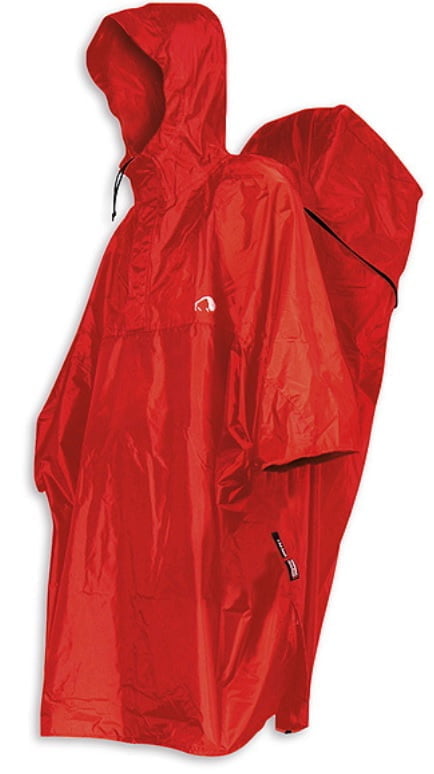
In case you don't have membrane clothing, you will require a raincoat or poncho. It's even better if it can be worn over your backpack.
Head Light

As already mentioned above, at night it is completely dark in the outdoors. Your only light source will be your headlight. You won't be able to go to into the sleeping bag in a tent without a headlight, there definitely will not be light inside.
Navigator

Take a navigator if you go hiking independently, without a guide, on an unfamiliar route. Modern models work well in the mountains with any weather. The main decisive factors while choosing one will be the usability and utility of the device. Make sure you take 1-2 spare battery complects as they discharge quickly.
Flask and Thermos

You must carry a water container or a bottle (about 1 litre capacity). The thermos must be taken in winter hikes, and it may also turn useful in the off-season. Sometimes a sip of warm tea can actually bring a person back to life. I'll add them to the needful equipment, because they are mostly used during the walk.
Gaiters

Protects from dirt and water. Necessarily needed in winter and off-season hikes.
Sunglasses

In the mountains sunlight is very harmful to the eyes, so you need to take your sunglasses to the mountains.
Bivouac Gear
Tent
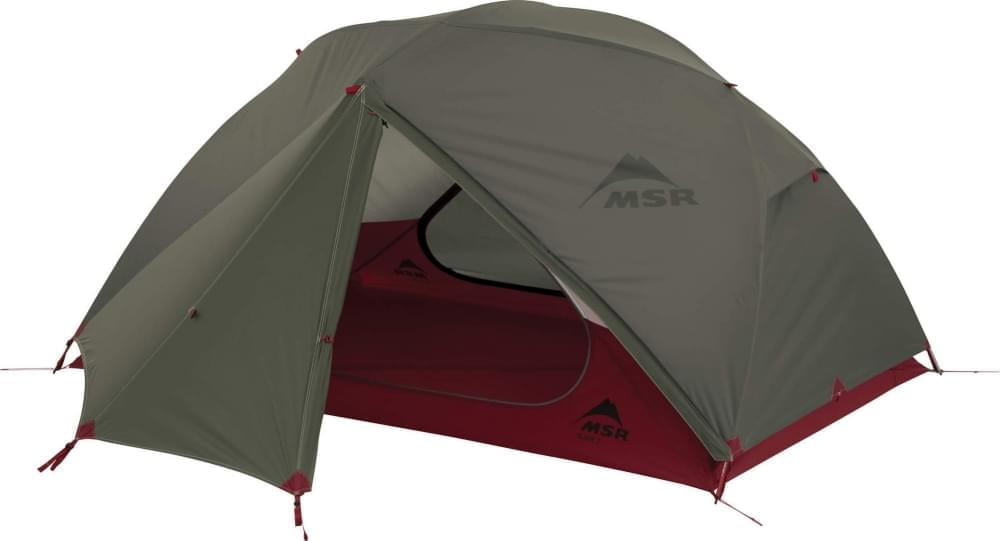
A tent is the house of the tourist. It will protect you from bad weather and hide from the local fauna. It is important to rely on it. There are many criteria in the choice of tents, and on this topic you can even write a separate article. Briefly, it should be light, two-layer (mandatory), have a strong frame and high water resistance. The weight of the tent depends on the material and amount of arcs (mainly aluminium or fiberglass), the materials of the tent and the inner tent.
I recommend aluminium arcs because they are stronger and lighter than fiberglass arcs. Many tent models have a mesh inner. Such tents are absolutely not suitable for mountain hikes! Air will pass through and it will be very cold inside. You better take a little heavier but warmer tent. If you travel to warm countries, you can take a mesh tent. The water resistance indicator shows what level of precipitation the tent resists. For mountain tents, it shouldn't be less than 4,000-5,000 mm.
Sleeping Bag

Bed for a tourist and very important equipment. You will sleep and gain strength in it. If it is picked up incorrectly, you can forget about normal sleep and rest. The main criterion in choosing a sleeping bag is the temperature range in which it can be used. Usually the three figures are indicated on the sleeping bag label: comfort, limit and extreme temperatures. Choose a sleeping bag for the temperature range of comfort-limit (also called the temperature “for girls” and “for men”), and do not look at the “extreme” at all! “Extreme” is the temperature at which you can survive, but not will stay healthy. Good quality sleep does not accepted in this case.
Another criterion for choosing a sleeping bag is a filler. As a rule they are made with a filler of down or synthetics. In trecks I prefer synthetic, because down loses its properties when wet. Synthetics are more unpretentious.
Dry Bag

It will turns useful if you need to keep things dry, especially when crossing a river or during the rains. You can put a sleeping bag, sleeping accessories, a set of underwear in it. In this case, there will be a guarantee that you have dry exchangeable clothing, and you will be dry during the sleep.
Mat

Sleeping bag is useless without a mat. If the sleeping bag substitutes the bed sheets, the mat is your bed. Now there are two types of mats: foam and inflatable. Foam mats are light, practical, but take a lot of space. Inflatable mats are soft, comfortable to sleep on, they take less space, but are heavier and can be ripped.
Belay Seat

Sitting on bare ground is not good for your health, so you have to take a seating pad with you. Make sure it is thick enough to protect you from cold ground, water and irregular terrain.
Mess Kit

Here is the minimum set of dishes from which you will eat and drink: mug, spoon and bowl. If you are used to eat with a fork, then there is such an option as a fork-spoon. The mug and bowl should have handles, since you will have to hold them hot and don't want to get burned. For winter and off-season campaigns it makes sense to take thermo-whare that will keep your food warmer.
Mess Pot and Ladle

Use the mess pot to prepare food for your journey. As a group, you will require two of them, one for porridge, and another for tea. Choose a pot according to the size of the group; consider about 0.5 litres capacity per person. You will require a ladle to dish out food.
Burner/Stove

At altitudes above 2,000 meters there are almost no trees, so in mountain hikes the food is cooked on burners. There are a lot of options, but personally I like not the jet boils but stove burners (because of their stability on the ground). I also recommend to take a lighter, in case the piestic ignition lets you down.
Knife

The group must carry a knife. You will use it to cook (cut bread, sausage, etc.). I use a ordinary knife with hollow handle. It's very light and does not sink (because of the handle). Avoid taking any "survival knives", huge hunting knives or similar: it is not convenient.
Swiss Knife

The most common Swiss knife with 12 functions, also called officer knife (because of the corkscrew). I use it to open canned food, but it may turn useful in any moment of the hike.
Axe/ Handsaw

If you go on a camping trip, where you are supposed to make a campfire, then you need to take either an axe or a handsaw with which you will prepare firewood. I prefer taking a chainsaw because it's lighter and more compact, and it consumes less energy than an axe usage.
Toiletry Bag

Carry your toiletries here. Don't take too much and keep in mind the weight. What you really need is: a toothbrush and a small tube of paste; a hotel size soap; a small shampoo tube; a microfiber towel because it dries quickly and is small (you won't need to wrap your body with a towel); mirror; nail clippers; cotton buds; a small hairbrush/comb; razor.
Sewing and Repair Kit

Something always breaks, tears or wipes while hiking. Therefore, there should be at least one basic repair kit in the group. Make sure you take needles, threads, tent patches and tape. You can add other items according to your requirements.
First Aid Kit

Take your own aid kit and another one for the group. Put some plasters, sunscreen (also repairing cream for the burns as someone may get sunburn), lip balm and medicines for your personal needs in your personal first aid kit.
The publik first aid kit should include all the required medicines in case of emergencies. Someone with medical background or, at least, with a first aid course should approve your first-aid kit. The most common medicines for the mountains, include medicines for stomach-aches, headache, fever, anti-herpes cream, allergy relief medicines, disinfectants, bandages, plasters, scissors.
Before a difficult trip I recommend taking a first aid course. You will be taught how to save someone, how to act properly in case of emergency and what to carry in your first aid kit (besides what I mentioned above).
Enjoy the mountains and take care of yourself!





